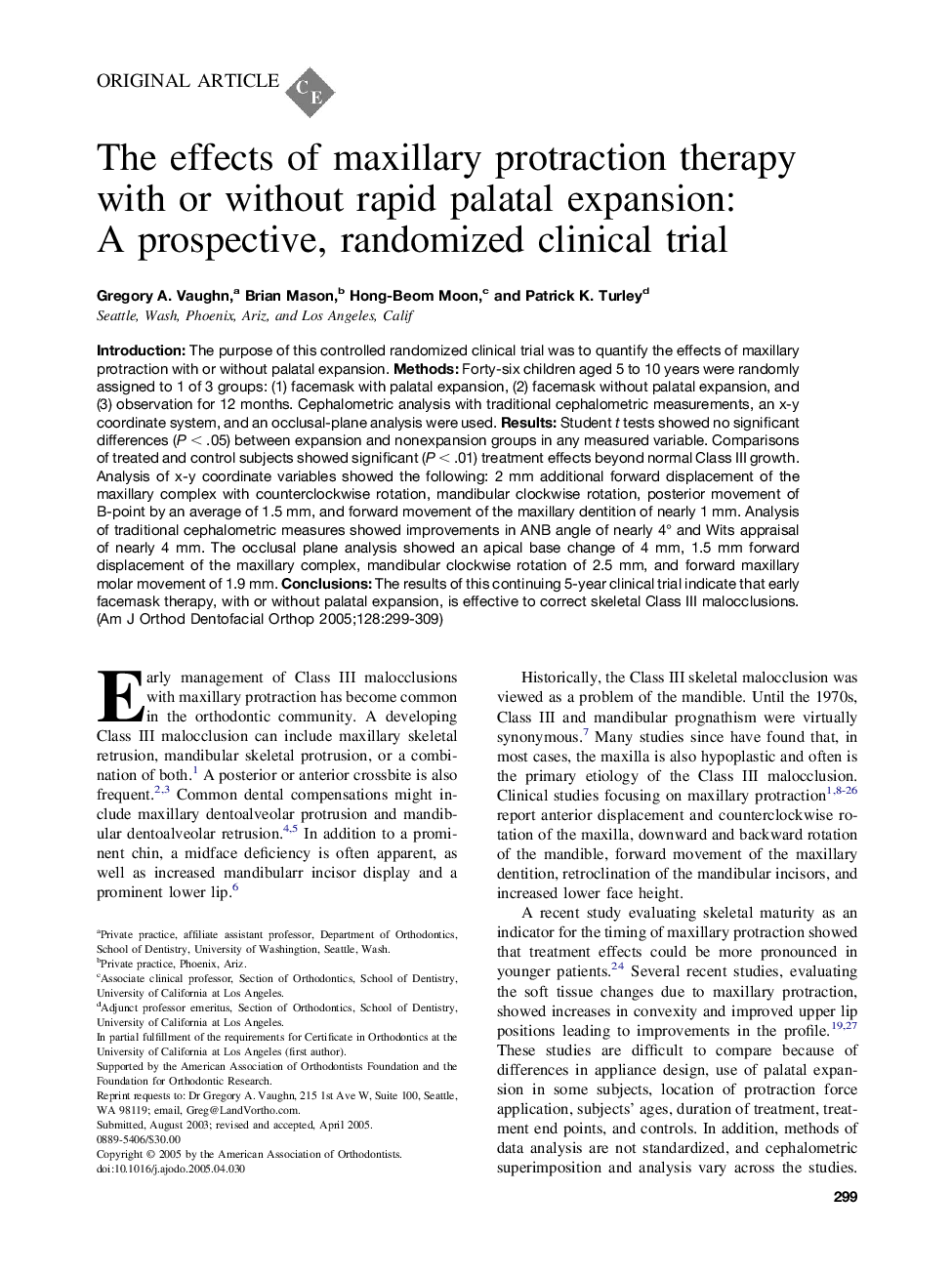| Article ID | Journal | Published Year | Pages | File Type |
|---|---|---|---|---|
| 9992665 | American Journal of Orthodontics and Dentofacial Orthopedics | 2005 | 11 Pages |
Abstract
Introduction: The purpose of this controlled randomized clinical trial was to quantify the effects of maxillary protraction with or without palatal expansion. Methods: Forty-six children aged 5 to 10 years were randomly assigned to 1 of 3 groups: (1) facemask with palatal expansion, (2) facemask without palatal expansion, and (3) observation for 12 months. Cephalometric analysis with traditional cephalometric measurements, an x-y coordinate system, and an occlusal-plane analysis were used. Results: Student t tests showed no significant differences (P < .05) between expansion and nonexpansion groups in any measured variable. Comparisons of treated and control subjects showed significant (P < .01) treatment effects beyond normal Class III growth. Analysis of x-y coordinate variables showed the following: 2 mm additional forward displacement of the maxillary complex with counterclockwise rotation, mandibular clockwise rotation, posterior movement of B-point by an average of 1.5 mm, and forward movement of the maxillary dentition of nearly 1 mm. Analysis of traditional cephalometric measures showed improvements in ANB angle of nearly 4° and Wits appraisal of nearly 4 mm. The occlusal plane analysis showed an apical base change of 4 mm, 1.5 mm forward displacement of the maxillary complex, mandibular clockwise rotation of 2.5 mm, and forward maxillary molar movement of 1.9 mm. Conclusions: The results of this continuing 5-year clinical trial indicate that early facemask therapy, with or without palatal expansion, is effective to correct skeletal Class III malocclusions.
Related Topics
Health Sciences
Medicine and Dentistry
Dentistry, Oral Surgery and Medicine
Authors
Gregory A. Vaughn, Brian Mason, Hong-Beom Moon, Patrick K. Turley,
